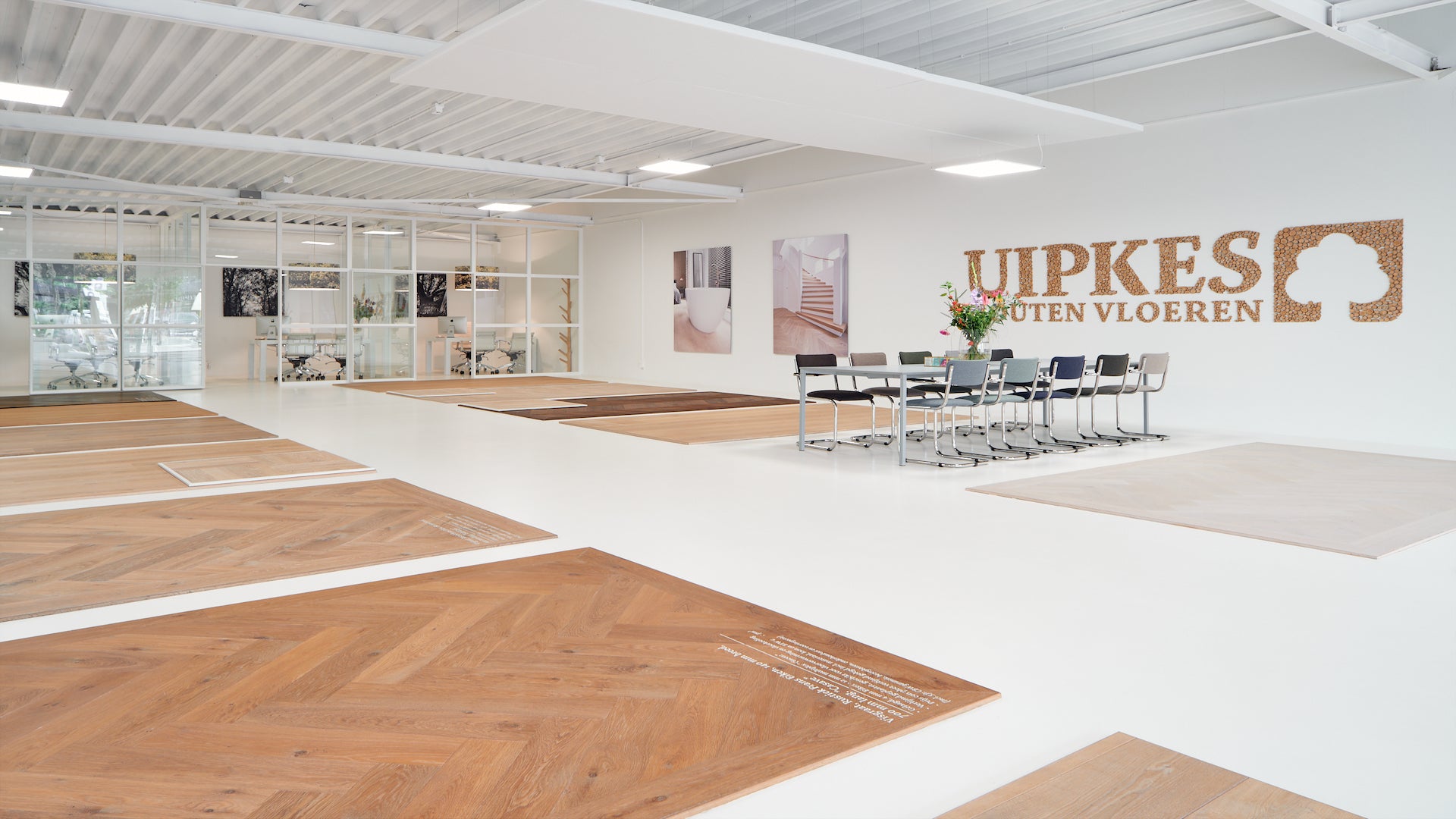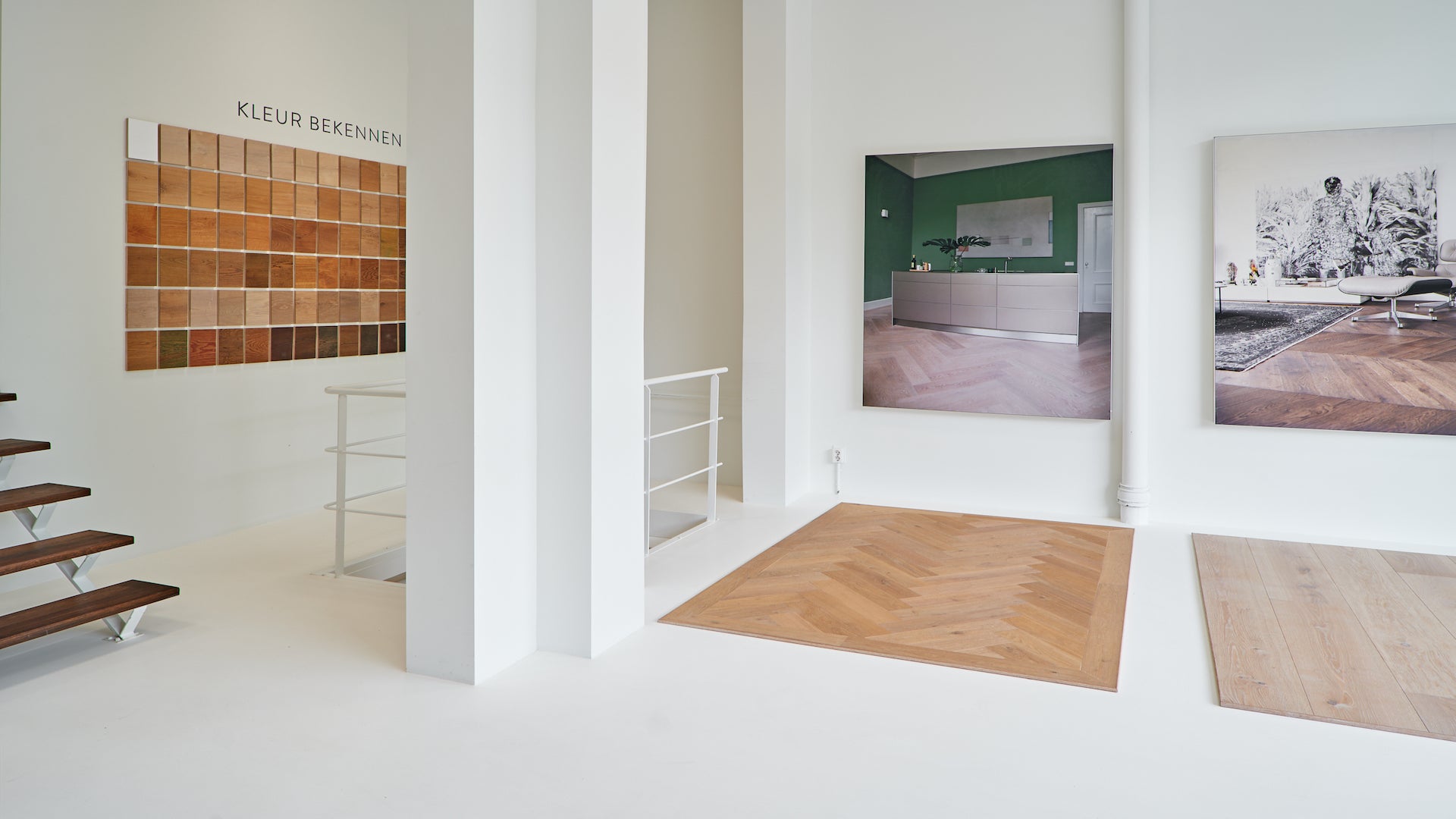Verantwoord hout

Bezoek de showroom
In these times it is important to work with the wood product in a professional and responsible manner. Naturally, we set high standards for our own organization and employees, but also for the sustainable origin of the product.
Wood is a product that is easy to work with and suitable for many applications. It is easy to reuse and is also biodegradable. However, the use of wood also has a disadvantage; forests are cut down every year.
If this is done carelessly, the forest will hardly recover or not at all. For an environmentally friendly choice, it is therefore important to know where the wood of your wooden floor comes from: from a responsibly or irresponsibly managed forest.
Origin of wood
Wood can come from a primeval forest or a production forest. The vegetation of primeval forests consists of different tree species of various ages. This makes a primeval forest very attractive to many plants and animals. Most primary forests are found in the tropics in the form of tropical rainforests. But primeval forests can also be found in northern regions, such as the United States, Canada, Australia, Russia (Siberia) and other former Soviet republics.
Production forests are managed by humans themselves. Wood harvested in a production forest is more environmentally friendly than wood harvested in pristine primary forests. Forest management of a production forest can be responsible and sustainable, ensuring that flora and fauna remain intact. But there are also production forests and plantations in which the trees are grown in rows, all of the same species and the same size. These trees are all planted or sown at the same time and harvested at the same time. These forests are unattractive to other plants and animals.
Sustainable forest management means selective felling, only those trees that are really useful are felled. In its place, a new tree is planted or seedlings are given the opportunity to take the place of the felled trees. When this is done correctly, the richness of the forest is maintained.
Uipkes Wood Flooring is therefore against illegally felled wood and in favor of an international, global approach to the problem and a legal import ban at European level. Preferably, timber is traded from demonstrably sustainably managed forests and mainly timber is sold from Europe.
Bezoek de showroom
The planing process
We strive to ensure that all wooden floors that are supplied are produced in our own planing mill . By definition, the raw wood is purchased sawn and dried from regular suppliers in the Netherlands and Belgium. Before the wood is processed, it is checked whether the supplied wood is of the right quality to be processed into a good product.
The planing process consists of three steps. In the first phase, rough wood is planed clean on four sides ('calibrated'). It is then checked which side of the wood is of the best quality. It is checked whether there are any defects in the wood such as mold, slat stripes or drying stains.
These are often not yet visible in the raw wood. In the second phase, the rough planks are provided with a tongue and groove on the long side, three tension grooves on the bottom and a bevel on the top of the plank. Finally, the planks are cut to length and provided with a tongue and groove on the ends. After this, it is checked whether the planks are properly planed.

